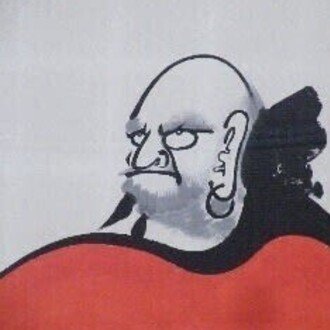
落語とお経の共通点、「言葉」 "Words", the common points between rakugo and sutra
先日の佛日寺寄席では、お寺ならではの行事があった。
落語がはじまる前に、和尚の木魚と鐘に合わせ全員で般若心経を「読経」した。
参加者全員にフリガナを打った般若心経が2種類配られた。一つは私も馴染のお経であったが、もう一つが今までに見たことのない、同じ般若心経ではあるが読み方が違うものであった。
The other day, at the Buddhist temple vaudeville, there was an event unique to the temple. Before the rakugo began, everyone "readed" the Prajna Shingyo along with the mokugyo and bell of Osho. Two types of Prajna Shingyo that hit frigana were distributed to all participants. One was a familiar sutra, and the other was the same Prajna Shingyo that I had never seen before, but the reading was different.
般若心経が書かれてある紙には、馴染のものには「平安時代以前に伝来 呉音(ごおん)の般若心経」と記されてあった。お恥ずかしいが、この呉音ということもわからないありさま。さらに、もう一枚の般若心経には「江戸時代隠元禅師伝来 黄檗唐韻(おうばくとういん)の般若心経」とあった。
中国の昔の時代やその地域の言語の違いなのだろうか、それが日本に伝来された時代によって発音が異なるようだ。
On the paper on which the Prajna Shinkyo was written, the familiar one was written as "The Prajna Shingyo of Goon, which was introduced before the Heian period". It's embarrassing, but I don't even know what this is. In addition, the other Prajna Shingyo was "The Prajna Shingyo of Obakutoin, which was introduced by the lngen Zen Master in the Edo period".
Perhaps it is a difference in the language of the old days of China and the region, it seems that the pronunciation differs depending on the time when it was introduced to Japan.


通常の般若心経では、呉音というは日本語の漢字音(音読み)の一種なので読み方として我われには分かりやすい。呉音は資料によると、漢音以前に日本に伝えられた字音で、揚子江下流の南方方言のものであろうと推定されている。仏教経典の読み方に多く用いられているとのことだった。
一方、黄檗唐韻とは、黄檗宗独自の読経ということだった。近世の中国語の発音に近い発音で読経が行われているようだ。
In normal Prajna Shingyo, Goon is a kind of Japanese kanji sound (reading aloud), so it is easy for us to read. According to the materials, Goon is a character sound that was introduced to Japan before Kanon, and it is estimated that it is in the southern dialect of the lower Yangtze River. It is said that it is often used for reading Buddhist scriptures.
On the other hand, Obaku Tang Rin was a reading sutra unique to the Obaku sect. It seems that the sutras are read with a pronunciation similar to that of modern Chinese.
黄檗宗は江戸時代初期に隠元真空大師が来日し開山した宗派で、現在日本にある13宗では一番新しい。臨済宗から独立した禅寺系である。だから現在も黄檗宗では、隠元禅師伝来として般若心経は黄檗唐韻の読み方であげられている。
The Obaku sect is a sect that was opened by lngen Daishi in the early Edo period and is the newest of the 13 denominations currently in Japan. It is a Zen temple system independent of the Rinsai sect. Therefore, even now, in the Obaku sect, the Prajna Shinkyo is mentioned in the reading of Obaku Tang Rin as the tradition of the lngen Master.
落語会に参加された皆さまもフリガナをたよりに読経した。時代のなごりなのか、慣習なのか、見慣れないものに触れるのは新鮮だった。お経と落語を同じ土俵では語れないが、「言葉で伝える」作業としては同じことのように思えた。貴重なお寺での落語会だった。
Everyone who participated in the rakugo party also read the sutras based on frigana. It was refreshing to touch something unfamiliar, whether it was a reminder of the times or a custom. I can't talk about sutras and rakugo on the same level, but it seemed to be the same as the task of "telling in words." It was a rakugo party at a precious temple.

リポート&写真/ 渡邉雄二 Reported & Photos by Yuji Watanabe
いいなと思ったら応援しよう!

